Check in at the 'Nine Scenic Spots of Kowloon' to fully explore the unique imprint of Kowloon Slope
Check in at the 'Nine Scenic Spots of Kowloon' to fully explore the unique imprint of Kowloon Slope
Every city is like a thick sea of words, encompassing everything and having its own stories that slowly settle over time, whether quaint or vibrant.
Jiulongpo District is one of the core urban areas of Chongqing, located in the southwest of Chongqing. It is an important part of the Chongqing Yuzhong Peninsula surrounded by the Yangtze River and Jialing River. The tourism resources are abundant, the historical context is long-standing, and the artistic soil is rich and fertile.
Every city has its own unique imprint, both past and present, and the Kowloon Bay area is no exception. Nine of the most representative landscapes and landmarks in Jiulongpo District have been selected this time, covering both natural and cultural landscapes, forming a tourism boutique that can represent the characteristics of Jiulongpo - the "Nine Scenic Spots of Jiulong". These precious imprints condense the development trajectory of the history and cultural ecology of Jiulongpo District, and have also become the external business card and image symbol representing Jiulongpo District.
In early autumn, Zhongliang Mountain is lush with greenery and can be regarded as a natural barrier in the main urban area of Chongqing. It is about 100 kilometers long from north to south and about 2-7 kilometers wide.
As the "green lung" of Chongqing, Zhongliang Mountain spans six urban areas including Yubei District, Beibei District, Shapingba District, Jiulongpo District, Dadukou District, and Jiangjin District. The Zhongliang Mountain Range stretches and undulates, with a full mountain shape resembling a "green backbone" running through the north and south of Jiulong Slope, supporting the ecological axis of Chongqing's main urban area. With over 90% forest coverage, it gathers 10 unique natural and cultural resources such as Qifeng, Qidong, Qiquan, Qisi, and Qiwen. Mountains, waters, forests, fields, lakes, grasses, and springs play a green symphony. Strolling through it brings a sense of comfort and immersion.

The elevation of Zhongliang Mountain is approximately 400-1000 meters, not too high, making it a great place for citizens to relax, entertain and take care of themselves. Due to the wide area of Zhongliang Mountain, there are relatively many tourist attractions where visitors can enjoy the scenery from different angles. One of the great places for hiking and outings is Zhongliang Yunling Forest Park.

The original name of Zhongliang Yunling Forest Park was Jiandao Mountain Forest Park, which is continuous and undulating. It is a great place for climbing and sightseeing. Climbing up the hiking trail, you can see the beautiful scenery gradually unfolding, making you feel relaxed and happy.

On Zhongliang Mountain, one can overlook Jiulong Slope from afar and climb high to see far away, which always makes people excited. The picturesque mountains and rivers make one unable to resist love!
It is worth mentioning that in the future, Zhongliang Mountain will also embark on a journey through the center of the earth, with the goal of "big city beams, famous mountains in the world" and the world's largest city "twin" mines as the core detonation point. Utilizing the abandoned Zhongliang coal mine with a total length of 67 kilometers, divided into 9 layers, and deep underground at an altitude of -20 meters, in accordance with the goal of becoming a model of urban ecological civilization and a well-known tourist destination in China, we aim to make it a model of Jiulongpo, known as the "Beautiful City of Mountains and Rivers".

Chongqing Art Park "is a place full of artistic atmosphere. As a part of the Yangtze River Culture and Art Bay Area, it has the world's largest graffiti street and is the birthplace of Sichuan Academy of Fine Arts, a contemporary art holy land and original base in China. In addition, there are also internet famous attractions such as Traffic Tea House, Military Brother Bookstore, and Himalayan Bookstore.
From entering the campus gate, Sichuan Academy of Fine Arts is like those interesting sculptures and graffiti, shining with their unique charm related to art in every corner, every road, and even every leaf; Any framing is a beautifully composed artistic scene.

Huangjueping is located by the Yangtze River, nestled under the old block of Huangjue trees. Rows of seemingly inconspicuous residential buildings have been immersed in an artistic atmosphere for many years. The bold collision of simple architecture and artistic elements exudes a unique artistic temperament.
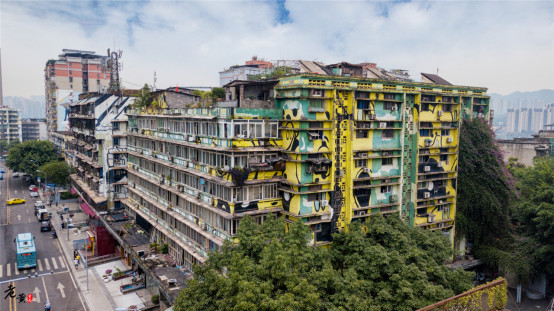
Early on, students from Sichuan Academy of Fine Arts added a unique coat to the streets and buildings, giving birth to the graffiti street. It breaks the rules of space and integrates art into an open living space, allowing people to accidentally 'fall' into a unique artistic atmosphere. The old street radiates unprecedented youth and vitality due to art and creativity.
The graffiti in Huangjueping is a pure artistic product and has become a popular destination for tourists from all over the country to come and check in.

Chongqing Art Park embodies the Chongqing people's pursuit of art and understanding of life. Here, one can meet artists with just one turn, and a new artistic experience can be gained with just one stop.
Now, with the Huangjueping campus of Sichuan Academy of Fine Arts as the core, the industrial and cultural area of the power plant as the chain, and the ecological area of Jiulong Riverside as the pole, a boundaryless Chongqing Art Park is being created that allows citizens to participate widely.

A 'city' changes a city. The Chongqing Wanda Plaza, which integrates with the Yangjiaping commercial district, is the largest Wanda Plaza in the western region and one of the only three national five-star shopping centers in Chongqing, capable of promoting the city's commercial civilization to a large extent.
At Wanda Plaza, you can experience a one-stop service of food, drink, and entertainment, which includes international brand flagship stores, retail boutique stores, high-end supermarkets, various specialty foods and restaurants, colorful Wanda real ice rinks, and top tier cinemas and other entertainment and leisure facilities.

In short, at Wanda Plaza, it can meet all your needs. If you are a shopping enthusiast and love delicious food, Wanda Plaza is definitely your best choice.
Wanda Plaza not only offers local cuisine, but also serves as one of the places for luxury goods shopping. Multiple high-end brands have already settled in Wanda Plaza, some of which are new to Chongqing.
You can enjoy authentic Sichuan cuisine or snacks, as well as high-end Western and Japanese cuisine. It has to be said that there is a world-class internet famous coffee shop that only sells "coffee" -% Arabica Coffee Shop, which is also the first% Arabica coffee shop in Chongqing.

The coffee shop is located at the top of the stairs between the sunken plazas on the first floor of the Wanda Plaza. The broken stairs are cleverly connected to blend in with the outdoor environment, creating a coffee space that resembles a hillside, attracting many tourists to take photos and check in.

Apart from Wanda Plaza, Yangjiaping commercial district is one of the five major commercial districts in Chongqing, located in the central area of Yangjiaping in the core area of Jiulongpo. It is also a high-quality choice for dining, entertainment and leisure destinations. After renovation and upgrading, Jiulongmen and Jiulongyin have become new check-in spots and iconic buildings in the Yangjiaping commercial district.

Once "Jiulongmen" was unveiled, it became a new landmark that netizens eagerly checked in. The four pillars of Jiulongmen are as red as fire, and a treasure trove of dragons and phoenixes is gathered inside the door. Looking down from the sky, the pattern of Jiulongmen is composed of two dragons intersecting and echoing, with a strong Chinese style. And the entire design is grand, with auspicious patterns, making it another city logo (emblem) of Jiulongpo. The Metro Line 2 passes through the "Jiulongmen" and becomes a unique landscape in Chongqing.
Animal Paradise · Chongqing Zoo —— Recalling a happy childhood at the animal park (Ticket price: 25 yuan)
As one of the twelve scenic spots in New Ba Yu, Chongqing Zoo, originally named "West District Park", is the joy of childhood for generations of Chongqing people, filled with their memories.

The 65 year history of the zoo carries the childhood memories of several generations, and almost every Chongqing resident's photo album contains a photo of themselves with the Chongqing Zoo. Today, it remains the most beloved zoo in the main urban area of Chongqing.

Chongqing Zoo is the only zoo in China that simultaneously houses and exhibits golden cats and clouded leopards. In addition, we can also see popular animals such as pandas, hippopotamuses, rhinoceroses, giraffes, etc. Giant pandas have always been the king of popularity in zoos. In my memory, giant pandas have always been the treasure of Chongqing Zoo. Many parents bring their children here to observe and get to know the national treasure pandas up close. Here live two pairs of twin pandas born on the same day - "Double Celebration"; The world's oldest artificially bred giant panda, "Nova," just celebrated its 38th birthday in June this year (equivalent to over 110 years of human life).




At Chongqing Zoo, not only can you see various animals, but you can also awaken some childhood memories here. The place where Xizang brown bears live has never changed. The thick moss on the wall has witnessed the spread of years.

The child who shouted to go to the "West District Park" when he was a child also brought his child to play, holding the classic zoo three piece set with his little hand, ice cream, popcorn, and grilled sausages.
Museum Cave Heaven · Chongqing Jianchuan Museum Settlement —— Jianchuan Museum returns to the era of war (Ticket price: 50 yuan, online purchase is 44 yuan per ticket!)
Chongqing is a mountain city and also a city filled with air raid shelters. "Chongqing's air raid shelters made great contributions to the War of Resistance Against Japan," an elderly person once said. The air raid shelters in Chongqing are a unique product of history. Nowadays, the unique "air raid shelter culture" has become a unique scenic spot in Chongqing.

When it comes to air raid shelters, we cannot ignore the Chongqing Jianchuan Museum. There are many Jianchuan Museums throughout the country, but only Chongqing Jianchuan Museum is built in an air raid shelter. This also earned it the reputation of becoming the first cave anti Japanese war museum in the country.
The Chongqing Jianchuan Museum is located in a canal and tunnel, where there are 32 air raid shelters left over from the Anti Japanese War. After the end of the war, it was once the factory of Chongqing Construction Factory. These air raid shelters were once used in workshops. As the factory relocated, these air raid shelters were left unused and later developed by Fan Jianchuan into the distinctive Chongqing Jianchuan Museum.



Visiting the Jianchuan Museum can first make you feel like time traveling back in time. It provides a good overview of China's industrial development history, the history of the War of Resistance Against Japan, and every developmental milestone since the founding of the People's Republic of China.
Even if you can't find a familiar feeling from distant times, you can definitely find warm memories from a collection or collection in a museum.

Half a lifetime of military service, half a lifetime of family and country, with one bright red handprint after another overlapping. The veterans of the War of Resistance Against Japan are old, but it was their hands wielding large knives and spears that blocked the fierce Japanese invasion and lifted up the future of the entire Chinese nation.

Hero's Residence · Former Residence of Zhou Gongzhi —— Searching for the imprint left by the times in the former residence of the hero

Compared to the heaviness of Zhazidong and Baigongguan, I prefer the tranquility of Zhou Gongzhi's former residence. The former residence of Zhou Gongzhi was the place where he lived before his death, and also the location where the Sichuan Temporary Provincial Committee of the Communist Party of China held an expanded meeting and the Sichuan Provincial Committee of the Communist Party of China was established.
The former residence of Zhou Gongzhi is located in Zhou Family Courtyard, Doushita Village, Tongcanyi Town, Jiulongpo District, Chongqing, about 50 kilometers away from the main city. The surrounding environment is beautiful, with abundant green plants and accompanied by a lotus pond, making it a paradise on earth.
Zhou Gongzhi was a pioneer of the Communist movement in China. In 1928, he was arrested for participating in the "Establishment Conference of the Communist Party of China's Baxian County Committee". Under the threat and temptation of the enemy, he chose death rather than surrender and died heroically at the age of 29.

Passing through the bluestone road, the slate emits a unique echo, with a powerful and resolute sound. Although time has passed on the slate for hundreds of years, the sound made by the slate, like its owner, leaves a glorious imprint in the long river of time with a "resounding and powerful" life.
Upon arriving at Chuxintang, the first thing you see is the bright red party flag and the words "Chuxintang, Mission, and Struggle" standing at the main entrance. The former residence also displays the glorious deeds of Zhou Gongzhi throughout his life, promoting patriotism. In the middle room of the east wing of the former residence, there are wooden lecture tables, benches, and a stone statue of Zhou Gongzhi, which he used to teach local children. In addition, the former residence also displays documents from the First Congress of the Sichuan Provincial Committee of the Communist Party of China, as well as the life story of Zhou Gongzhi.
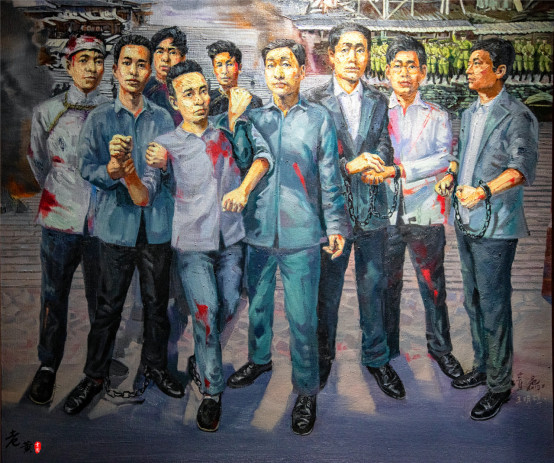
Starting from patriotic education, a strong educational atmosphere is promoted here. Starting from understanding history and interpreting events, we can then pay tribute to the martyrs, remember our mission, and never forget our original intention. This is the core value of current red tourism. Perhaps we have moved away from the smoke filled years, but remembering bitterness and longing for sweetness, we cannot stop for a moment to continue the prosperity of our country.


Special attention should be paid to the fact that the museum is closed on Mondays, so visitors must be cautious to avoid flying into the air.
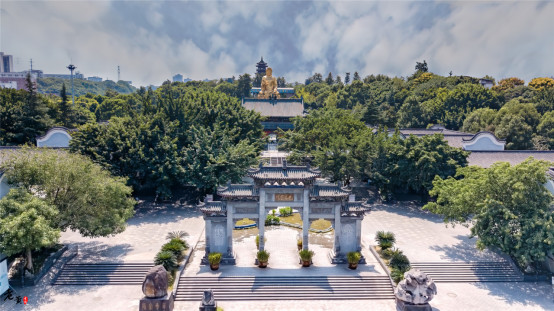
The Huayan Tourist Area covers an area of over 1600 acres and integrates mountains, water, forests, caves, and temples. It is one of the top ten jungles in Southwest China and is known as the "Bashan Lingjing". It is a national AAAA level scenic spot. The famous Chuandong temple in the scenic area, Huayan Temple, is one of the twelve scenic spots in Chongqing's Xinba and Chongqing.
The most famous attraction in Huayan Tourist Area is this open-air golden Buddha, whose demeanor is easy-going. His left hand is spread open on his lap, and his right hand is raised with the palm facing outward, making him a classic Buddhist figure. This golden Buddha also contains Buddhist artifacts, scriptures, calligraphy and paintings, treasures, etc. Standing under the golden Buddha, it seems that the soul has been sublimated.


There are also regular Buddhist lectures in Huayan Tourist Area, which is a place for studying Buddhist philosophy. I was fortunate enough to encounter a lecture that day. Although I couldn't hear what the master was saying from a distance, I could still feel the charm of Buddhism as I watched the students below who were listening attentively.

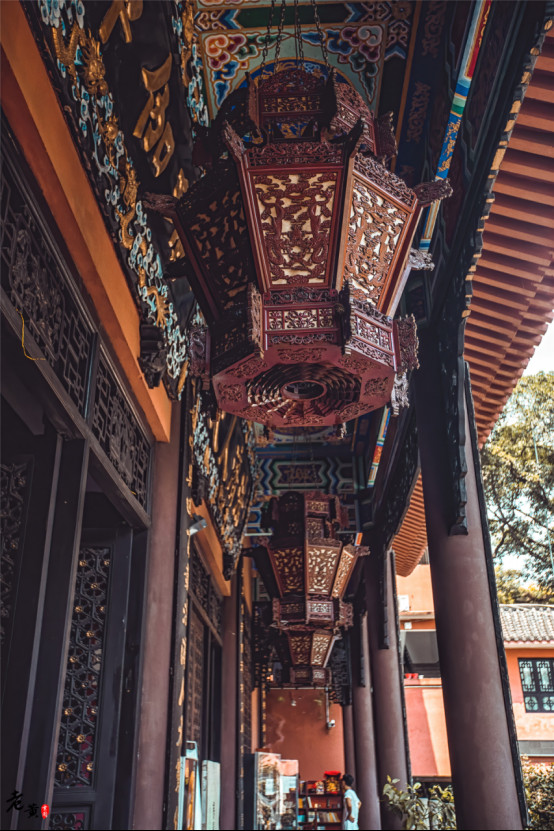
After paying respects to Buddha, I slowly walked along the Seven Step Lotus Pond, surrounded by the vast Huayan Lake, and admired the white egrets flying freely. At this moment, I truly felt that there was nothing else to do in life. At Huayan Tourist Area, calm down. Even if you don't understand Buddhist rituals, try to be a destined person. Bury the seeds of goodness in your heart and bless future generations.

Another famous feature in Huayan Tourist Area is its vegetarian culture. In the scenic area, there is a vegetarian restaurant that uses all vegetarian ingredients without any meat or fishy smell. It pays more attention to creative innovation and nutritional matching in the inheritance of traditional culture, allowing you to eat delicious and healthy food!
Nowadays, the Huayan Temple vegetarian restaurant has brought back the century old "spicy hot pot" and "sesame oil vegetarian noodles" to the dining table, making consumers even more satisfied.
In Huayan Tourist Area, you can not only worship, but also enjoy the scenery and delicious food. Here, away from the hustle and bustle of the city, experience the deep tranquility.

Xipeng Aluminum City cannot be said to have won by scenery, but the "Nine Scenic Spots of Kowloon" cannot be abandoned. It represents the most important industrial industry of Kowloon Slope and is the pillar of Kowloon Slope. It is the largest and most complete aluminum processing cluster area with the most complete industrial chain, and is the industrial calling card of Chongqing. It presents us with an "alternative" landscape impression. From a high altitude, overlooking the entire factory area, the factory buildings are arranged in a staggered manner, with a large scale, which can more intuitively feel the changes brought about by the current economic boom in Chongqing.


On August 29, 2019, the Chongqing Municipal Government signed a cooperation agreement with Chinalco Group to jointly establish Chinalco High end Manufacturing Co., Ltd. (referred to as "Chinalco High end Manufacturing") by Chongqing Aluminum Industry Development Investment Group Co., Ltd. and Chinalco Group, to jointly build a high-end aluminum aircraft carrier. The high-end manufacturing project of Chinalco takes the important position and appeal of Chinalco Group as the world's largest nonferrous metal enterprise and the leader of China's nonferrous metal industry, relies on the advantages of Chinalco Group in management, talent, capital, technology and other aspects, combines the strategic position and regional advantages of Chongqing as an important strategic fulcrum of the Western Development, an important junction point of the "the Belt and Road" and the Yangtze River Economic Belt, and relies on the solid industrial foundation of Chongqing's important national modern manufacturing base to jointly promote the transformation of military cutting-edge technology to high-end civilian products, jointly promote the extension of the aluminum industry chain to the high-end of the value chain, and lead the transformation and upgrading of China's high-end materials R&D and manufacturing to world-class.

After more than 50 years of development, its subsidiary Southwest Aluminum Industry Group has become one of the strongest large-scale aluminum processing enterprises in China's comprehensive strength. It is the core base for research and development support of aerospace and defense military materials, as well as the production and export of high-precision aluminum materials.
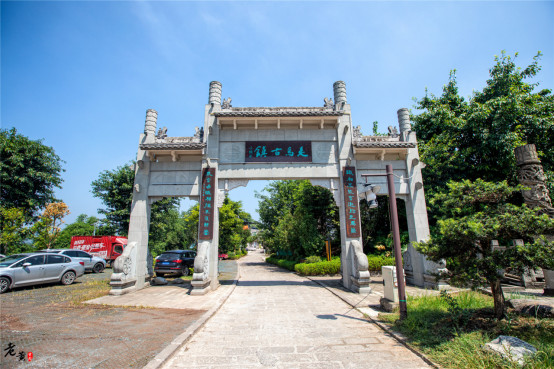
Zouma Ancient Town, as its name suggests, is intricately linked to horses. Legend has it that Zouma Ancient Town was built on a mountain rock resembling a galloping horse, with a very dangerous terrain and a certain degree of difficulty in climbing. Therefore, there is a folk saying that goes, "If you don't recognize your appearance, it's difficult to walk on the horse hill. Since ancient times, it has been called "Zoumagang" by the locals and later named Zoumazhen.

But there is another explanation, as Zouma Ancient Town is located in Ba County to the north, Bishan to the west, and Jiangjin to the south, it is known as "stepping on three counties with one foot". It is a must pass place from Chongqing to Chengdu and an important stop on the Chengdu Chongqing Road. Because it is a vital passageway, commerce and trade have been frequent here since ancient times, and it was once a place of economic activity where the wealthy were abundant.
Whether it's business dealings or pedestrian affairs, they all pass through here when traveling back and forth between Chengdu and Chongqing. So it also created a scene of people coming and going, horses in front and horses behind, and the term 'galloping horses' vividly depicted the colorful scenery at that time.

Nowadays, Zouma Ancient Town is more peaceful and quiet, with few pedestrians on the streets. Zouma Ancient Town maintains a good original ecology. Walking on the street, you can see neighbors playing cards in tea houses, as well as town residents chatting and drinking tea in small groups to pass the time.
In short, the purest impression of the ancient town in your heart is the current real scene of Zouma Ancient Town.
But if the town is backward and lifeless, then it's completely wrong! It is reported that there is a rush every Tuesday and Friday. That was the busiest time in the ancient town, where various small vendors gathered, and the town came alive, showing a lively and vivid atmosphere different from usual. And there are also bookstores and theaters on a regular basis, revitalizing these interesting things that have gradually disappeared in the city.


Zouma Ancient Town is worth walking slowly and savoring carefully, allowing the simple atmosphere to soothe the restless hearts of tourists and restart the unique tranquility and beauty from the past.
There are so many beauties in our hometown that we need to feel them with our hearts. If you have the opportunity to explore the "Nine Scenic Spots of Kowloon" and gain a deeper understanding of Kowloon Slope from various perspectives such as nature, city, and cultural landscapes, I believe you will have more unique experiences!
